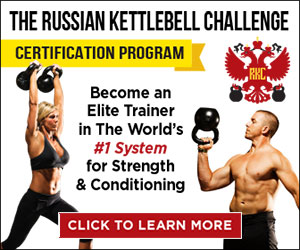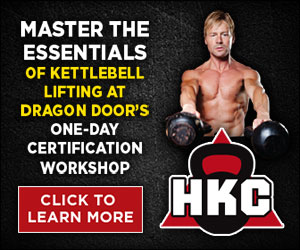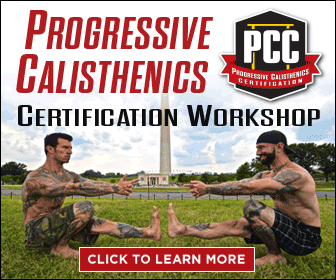
A little while ago, I took a call from a very dedicated fitness instructor who was considering adding kettlebells to his clients’ programs. Having found a lot of success with kettlebells in his own fitness, including significant fat loss **AND** impressive increases in strength. He had been considering going straight to the RKC, but wanted to learn about the HKC, and wanted to also ask about the upcoming HKC I will be teaching here in Durham, NC. He asked such great questions that I thought I’d share them and my answers with you here today. Please feel free to add YOUR questions to the comment area below too!
Q: What does the “H” in HKC stand for?
The “H” stands for Hardstyle. It’s the style of kettlebell training we teach, and which was popularized by Dragon Door here in the US starting around 2001. The word “Hardstyle” differentiates it from girvoy sport, or kettlebell sport which is a different movement style with different goals. The word “Hardstyle” also nods at hard style martial arts like karate as opposed to tai chi. Hardstyle kettlebell training challenges us to use a lot of tension–but also relaxation at the right times to generate power and strength.
The HKC Workshop is the one-day entry level kettlebell certification offered by Dragon Door. At the HKC you’ll learn how to do and teach the swing, the goblet squat, and the get-up. Then you will be tested on your proficiency with the exercises as well. We also teach a number of non-tested exercises to help you create programs and workouts for clients of any fitness level–the very next day when you return to your clients or students.. The HKC Workshop is designed to get you up and going with the most effective kettlebell moves right away.
Being able to do and teach a correct kettlebell swing is a game changer. I don’t think people realize how powerful it can be when performed correctly. When I first found kettlebell training in around 2008, I didn’t really know what I was doing for solid year while I was looking for an instructor. When I finally found and started working with an RKC Instructor, I realized that Hardstyle kettlebell training was unlike any other training modality that I had encountered. Finally I’d found something that worked as advertised–so of course I wanted to learn more and eventually teach it to more people. The HKC contains very powerful information.
Q: What’s the difference between the HKC and the RKC?
The RKC is a more comprehensive two-day workshop. There’s six exercises that are tested for technique along with the legendary RKC Snatch Test. While most fit people can absolutely take and pass the RKC, it’s definitely something that needs to be trained for. Not only are there tested techniques, a teaching test, and the Snatch Test, being prepared for the workshop allows a participant to absorb even more of the information and critical details. And since an experienced Master RKC instructor teaches every RKC Workshop, it’s a great opportunity to ask questions and really pick some brains.
While I love the RKC and recommend it wholeheartedly, it’s a great idea to do the HKC first. On the other hand, those who want to add kettlebell training and functionality to their practices right away–and who are not trainers may decide to get HKC certified and then renew instead of moving on to an RKC certification. Professionals like physical therapists, chiropractors, movement specialists, massage therapists, doctors, and other clinicians are often drawn to the HKC because their clients will most benefit from the very basics. The kettlebell deadlift, goblet squat, the lead-up drills to the kettlebell swing, the kettlebell swing itself, and the get-up are often enough for general populations. While I never want to talk someone out of going to an RKC, the HKC is something that most fitness professionals and serious fitness enthusiasts can consider doing immediately.
Even if you’re already accomplished with kettlebells, you’re sure to get a few new cues and more information on how to teach these movements—a hidden value of these workshops is that they attract very serious but friendly trainers, instructors, and other professionals who will often share their experiences and accumulated training wisdom. The other cool thing is if you do the HKC first, then you can get a $200 discount on your RKC Workshop when you sign up for it.
Q: When are you teaching an HKC?
I’m teaching one here in Durham, North Carolina on April 20th along with an SCC (Strength Calisthenics Certification) on the following Sunday the 21st. However, if you can’t make that one, I’m already plotting and planning the next date and location for another HKC—and there are plenty of other HKC workshops to choose from with other qualified instructors worldwide. No matter where you attend the HKC, you’ll really get a ton of value from it for your training and for your clients.
Q: What should I work on before the workshop? I have a little bit of kettlebell knowledge, but what do you recommend?
I’d definitely recommend practicing plenty of swings after working with an HKC or RKC instructor in your area—along with the other two core moves of the HKC, the goblet squat and of course plenty of get-ups. We will teach all three of these techniques though, so it is possible to show up and learn them that day—the only issue is that you may not pass that same day. BUT you do have 90 days to complete the testing if you do not pass on the day of the workshop. (From the HKC pages on DragonDoor.com: “In order to be certified you must pass all requirements. If you fail one of the requirements, you will have 90 days to send in a video to your instructor or visit your instructor in person to retest the requirement you failed.“)
Also, be sure to check out the resources on DragonDoor.com and the RKC blog – there are a lot of articles specifically addressing the HKC workshops and the specific curriculum which can help you practice, know what to expect on the day of your HKC, and also how to take the most advantage of the workshop experience itself. Dan John even has a fantastic article outlining 30 days of workouts post-HKC. All of the workouts in that lengthy article use the moves you’ve learned along with other solid basics like planks, etc. They’re very solid for practicing and for using with your clients when appropriate. They’re also great programming examples in and of themselves.






Leave a Reply